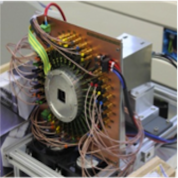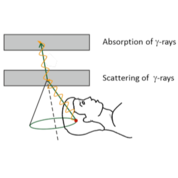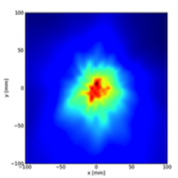Ion beams offer advantages over conventional treatment modalities, such as photons. Because of the way ions deposit their energy on their path through tissue they allow for an increased dose deposition in the tumor volume and reduce the collateral damage to the surrounding healthy tissue. However, small changes in the irradiated volume will lead to a misalignment of the deposited dose maximum and the tumor. Therefore, a dose monitoring system is highly desirable. Positron Emission Tomography (PET) was clinically applied for example between 1997 and 2008 at the GSI Helmholtzzentrum für Schwerionenforschung, Darmstadt, Germany, for monitoring the dose delivered by 12C beams. Due to inherent limitations of this method, a direct quantification of the delivered dose is not feasible. Therefore, another approach currently under investigation monitors the dose by means of the detection of prompt -rays. A Compton camera may be a feasible technical solution for such a monitoring system. A first prototype for imaging radioactive sources has been developed. This work is done in close collaboration with the Medical Physics group at the National Center for Radiation Research in Oncology - OncoRay.
When a patient is irradiated, gamma ray photons emitted from the irradiated tissue can be used to determine the dose deposited into the tissue. As a first test of this reconstruction method, the image of a point source sending out gamma rays was assembled from 2000 single-photon events. This technique requires a lot of computational power and could be accelerated using GPGPUs.







